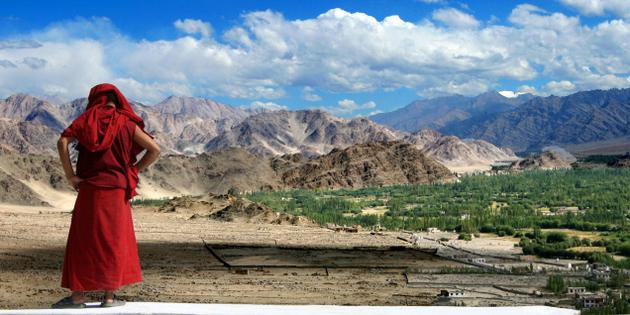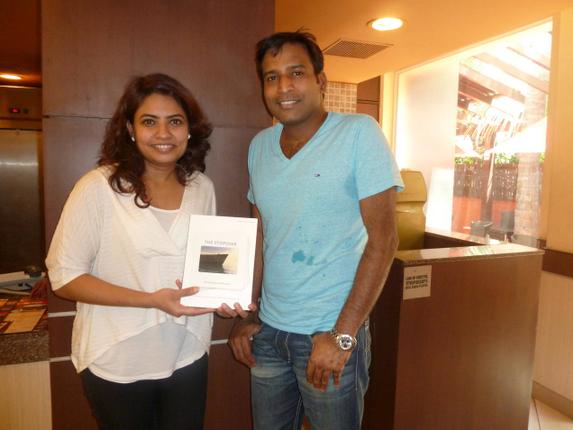The Stopover is a ‘photo-fiction’ that tells real stories through photographs and imaginary characters
After 12 years in the corporate world, he quit to do “something I’m passionate about”. He travelled, discovered true love in photography, and signed up for a full-year course at an academy in Udhagamandalam. Looking for subjects to complete his assignments, he fell in love again — this time with the life and culture of the ancient Toda tribes, whose settlements dot the beautiful Nilgiri hillscape. “After this there was no going back,” says Ram Prakash. “I had to tell the world the story of the Todas.”
Along with his friend Deepa Pinto, he visited Toda homes, listened to them, attended their ceremonies, took notes, and clicked pictures for two months. Deepa wrote that story and then three more, set in different locations. The stories and photographs picked from a collection went into a book. It just had to be called The Stopover.
Ram Prakash and Deepa Pinto with their creation / The Hindu
Unusual is one way to describe the book. Another would be, ‘a travelogue, historical record and brochure blended to text-book size’. The book’s content is woven into stories with fictional characters. These men and women populate the plots, sub-plots and situations created by the authors to talk about the real hopes and aspirations of the people they represent. The photographs support the facts and arguments the authors place before the readers.
TODA TALES
“I chose the Todas because I felt they were not understood well,” said Ram. In The Sun Shines Forever— one of the four stories in the book — the woman visitor to the Toda settlement is told their temple is not a ‘dairy temple’ as is commonly presumed; their marriage is solemnised, but the festivities are reserved for the time the woman conceives; they do not encourage outsiders into their families — that is how they’ve preserved a cherished way of life for centuries… The Tibetan story talks of the tenuous hope these brave people live on, the one on the life of Channapatna toymakers describes their struggle to sell their child-friendly products, and the Kolathur narrative on fish-breeding questions the right of people to confine ornamental fish in ill-equipped tanks. “I wanted to tell the story from the fish’s perspective,” says Deepa. “Well, if you want the fish confined, please do it the right way.”
FREEDOM OF IDEAS
The photographs, often stunning, underwrite the stories without ever revealing a face, since “faces of real people would get mixed with the fictional characters”. In one interesting frame, torchlight and long exposure highlight different parts of the assemblage. “The book gave me the freedom to play with ideas,” says Ram.
So what do you call this genre, asked the publishers. Fiction? Coffee table? The authors call it photo-fiction. “Its commercial viability was questioned, and I was asked to bunch the pictures together,” says Ram. Once they decided to publish it themselves, friends pitched in with design, layout, size of the book etc. “Theatre personality Arundhati Nag invited us to showcase ‘photographs, facts and fiction’ from the book at Ranga Shankara’s gallery in Bangalore. Nandita Das and Shekar Kapur have called it social photography.”
Writing those stories was a somewhat life-changing experience, says Deepa. It was a chance to travel, get to know people and cultures. She has turned vegetarian, “and a more open person. I have learned to look beyond what is obvious”.
We hear more Stopovers are on their way.
For details, visit www.thestopoverbook.com.
source: http://www.TheHindu.com / Home> Life & Style / by Geeta Padmanabhan / March 18th, 2013

